Posts Tagged ‘injuries’
National Teen Driver Safety Week Offers Safety Reminders for Massachusetts Families
 Motor vehicle crashes are the leading cause of death for teens. Each year, National Teen Driver Safety Week highlights safety insights for families and teens. This year, the event runs from October 18-24th. We encourage you to follow the National Highway Traffic Safety Administration and Teen Driver Source for more information. Teen Driver Source is operated by the Center for Injury Research and Prevention at Children’s Hospital of Philadephia, which offers Facebook and Twitter feeds.
Motor vehicle crashes are the leading cause of death for teens. Each year, National Teen Driver Safety Week highlights safety insights for families and teens. This year, the event runs from October 18-24th. We encourage you to follow the National Highway Traffic Safety Administration and Teen Driver Source for more information. Teen Driver Source is operated by the Center for Injury Research and Prevention at Children’s Hospital of Philadephia, which offers Facebook and Twitter feeds.
According to the National Highway Traffic Safety Administration, the greatest dangers teen drivers face are: alcohol consumption, inconsistent or no seat belt use, distracted driving, speeding and driving with passengers in the vehicle. This year, COVID-19 has introduced a new concern. Teens are driving far less and risk losing core skills. This is where National Teen Driver Safety Week comes in as an important resource this year.
Driving Safety Contract. If you follow Teen Driver Safety Week, you may learn about teen driver contracts. You can also print this parent-teen driving contract from the Centers for Disease Control and Prevention (CDC). Make your own edits and ask your teen to sign as a condition for using your vehicle. Give your teen a copy of the document to file away and review. This is a good way to lay out expectations for your teens and what will happen if they violate the agreement.
Make Sure Teens Get Enough Driving Time. If teens are not driving as much during COVID-19, they risk falling behind on fundamental skills. To prevent this, encourage your teen to drive regularly. When you go out with your teen, split the driving responsibilities so you know they are logging at least some time behind the wheel and you can monitor their progress.
Hold back judgment and sharp comments if you see some of their skills have regressed. This may happen. Just help them get practice in where they need it. Take advantage of empty parking lots and slower times of the week. You can get them back on track.
Drive Around Town With Your Teen. When you can, walk and drive around your community with your teen, including during the morning and afternoon commutes. This gives your teen a preview of what may come when they pull out of the driveway alone. You may see more pedestrians and cyclists in areas. You may see parking changes and restaurants offering sidewalk service. Share observation with your teens and try to make helpful suggestions to help them drive safely and avoid car accidents.
Stress the Importance of Slowing Down. Speed is a factor in nearly 30 percent of all fatal crashes involving teen drivers, according to AAA. Teens often have a heavy foot on the gas pedal and this only changes as they gain experience. For now, if teens can simply slow down, they can significantly reduce their risk of a collision.
Start by helping your teen recognize speed limits because they are not always posted right in front of them. While they should have learned this in driver’s ed, new drivers can use a reminder from time to time. Massachusetts sets a default speed limit of 30 mph in thickly settled and business areas, unless posted otherwise or an individual community has opted to lower the speed to 25 mph. School zones and work zones are 20 mph.
Encourage your teen to travel at or below the speed limit, especially in residential neighborhoods. By doing so, they reduce their risk of causing a car accident due to inexperience in the first few months or year of driving. They reduce their chance of causing themselves or someone else serious injuries and all the emotions and stress.
Reduce Distractions. Slowing down is the most effective tool for safe driving. It’s also important to reduce distractions. This means setting aside cell phones and limiting conversation with passengers in the vehicle. Sure, your teen is going to engage in discussion with others in the car. But try to make conversation lighter and focus more on observation, such as, “I see cars backing up at the traffic light ahead” or “there is an ambulance coming.” Save heavy discussion for before or after the drive.
Safety Steps Near Pedestrians and Cyclists. Teens may struggle to drive near pedestrians and cyclists. Every few weeks, drive through school zones and busy areas with your teen again, just as a refresher. Show them how you stop at crosswalks for pedestrians and leave room in anticipation of pedestrians. Instead of chatting at traffic lights, use this time to show your teen how to check for cyclists. More and more people have been cycling over the past decade in Massachusetts. This likely increased during COVID-19 and will likely continue. The reality is cars are not the only vehicle on the roads. Cyclists have the right to travel in the road too. You can really help your teen by teaching them to look for cyclists.
Buckling Up. Teens and young adults have the lowest rates of seat belt use, according to the CDC. Almost half of all drivers age 15-20 who died in car crashes were not wearing seatbelts in 2017, according to the CDC. During COVID-19, your teen may go long periods of time without driving or traveling in the car. Remind your teen – and all your family members – to always buckle up.
Boston and Cambridge Car Accident Lawyers – Breakstone, White & Gluck
At Breakstone, White & Gluck, our Boston car accident lawyers have over 100 years combined experience representing those injured by negligent driving. If you have been injured in a car accident and someone else was responsible, learn your legal rights. For a free legal consultation, contact our attorneys at 800-379-1244 or 617-723-7676 or use our contact form.
Motorcycle Safety Awareness Month: Safety Reminders and Our Experience Representing Injured Riders
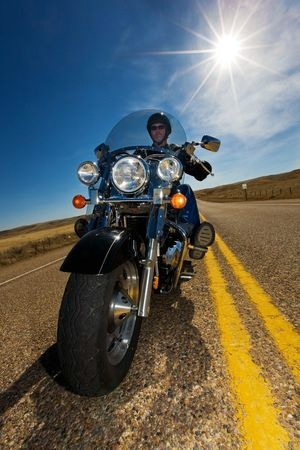 Before June begins, we have a final thought for May, which was Motorcycle Safety Awareness Month.
Before June begins, we have a final thought for May, which was Motorcycle Safety Awareness Month.
Motorcycle use continues to grow in the U.S. but so do motorcycle accidents. For 15 years now, we have seen an annual increase in motorcyclist fatalities, according to the National Highway Traffic Safety Administration (NHTSA). The one exception was 2009. When motorcyclists survive, they are also suffering more non-fatal injuries. In 2012, 93,000 motorcycling injuries were reported, 12,000 more injuries than in 2011.
A few safety reminders for drivers:
- Remember motorcyclists have all the same rights, privileges and responsibilities as other motorists.
- Allow motorcyclists a full lane width.
- Give motorcyclists extra following distance when you are behind them.
- Before you switch lanes, always check your vehicle’s mirrors and your blind spot for motorcyclists.
- Make sure you signal your intention to change lanes or merge with traffic.
- Do not rely on a motorcyclist’s flashing turn signal. The rider may have forgotten to turn it off or it may not be self-cancelling.
A few safety reminders for motorcyclists:
- Remember to wear your helmet and do not let any passengers ride without one. In 2012, overall motorcycle helmet use fell to 60 percent. Passenger helmet use dropped to 46 percent.
- Wear reflective tape whenever possible.
- Do not consume alcohol when you are operating.
- Obey traffic laws. You must have a special license to operate a motorcycle in Massachusetts and that is important. Some 24 percent of all riders who are involved in fatal motorcycle crashes are operating with invalid licenses.
Our Experience Representing Injured Riders
The Boston personal injury lawyers at Breakstone, White & Gluck have over 100 years combined experience handling automobile and motorcycle accident cases.
Read about one case attorney Ronald Gluck handled for an injured motorcyclist. Gluck’s client was seriously injured when a negligent driver cut into his lane and struck his motorcycle. He suffered numerous injuries, including facial fractures, concussions, blindness in one eye and a shoulder injury and had to undergo surgeries. Gluck negotiated a $3.75 million settlement.
Read about the case on our website.
Read the client’s review on Avvo or below.
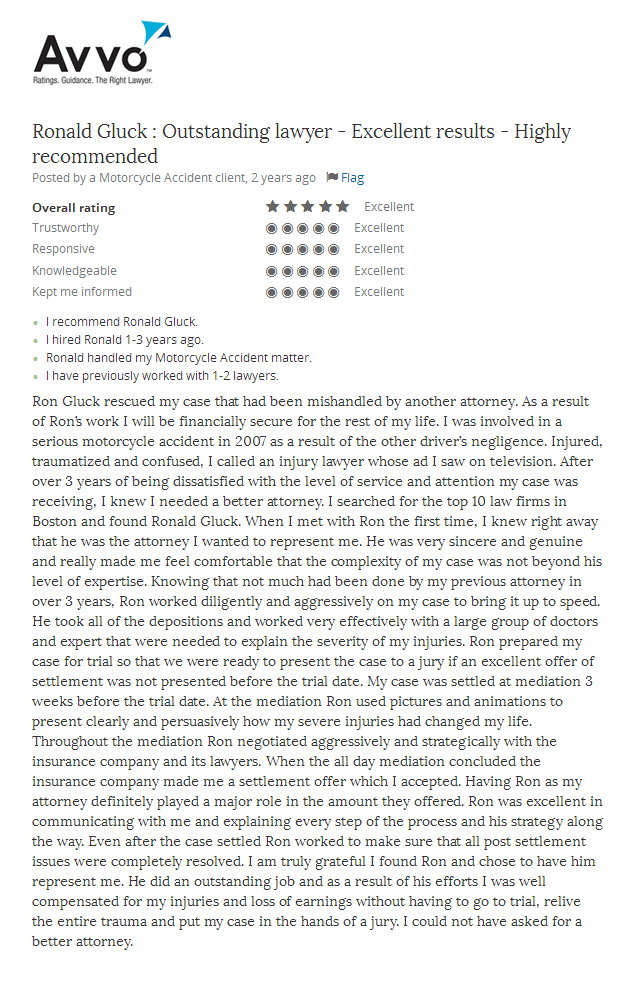
Contact Breakstone, White & Gluck in Boston
If you have been injured in a motorcycle accident, it is important to access immediate medical treatment. Then learn your rights for seeking compensation. For a free legal consultation, contact us at 800-379-1244 or 617-723-7676 or use our contact form.
Nearly 50 Massachusetts Workers Lost Their Lives on the Job in 2013
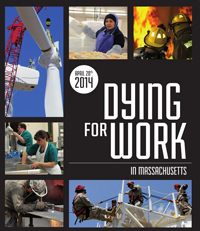 A new report shares hard numbers for Massachusetts workers. In 2013, 50,000 workers were seriously injured on the job and 48 others were killed in workplace accidents. An estimated 480 workers also died from occupational disease, such as cancer from workplace exposure to hazardous materials.
A new report shares hard numbers for Massachusetts workers. In 2013, 50,000 workers were seriously injured on the job and 48 others were killed in workplace accidents. An estimated 480 workers also died from occupational disease, such as cancer from workplace exposure to hazardous materials.
The 2014 “Dying for Work in Massachusetts” report has been released by the Massachusetts Coalition for Occupational Safety and Health (MassCOSH) and the Massachusetts AFL-CIO, which organize the annual Workers’ Safety Memorial Day. On April 28, workers, families of victims, advocates and state officials gathered at the Massachusetts State House for the 26th annual observance.
48 Workers Killed in 2013. The construction industry remains one of the most dangerous, with 11 workers killed in construction accidents in 2013. Workplace falls killed nine workers, causing one-fifth of all occupational fatalities in Massachusetts. Nine other Massachusetts workers were killed by machines and equipment. Workplace violence took the lives of five more workers, including a teacher, a police officer, a livery driver and two store workers.
Commercial fishing accidents killed two fishermen. MassCOSH considers this to be the most dangerous single occupation in Massachusetts. Since 2000, 60 people have died in this work.
The figure also includes nine firefighters who were killed by work-related cancers and heart disease and three servicemen who died in the War in Afghanistan.
Occupational Disease. MassCOSH reports on occupational disease which can develop after an employee is exposed to hazardous materials and dangerous dust. Because symptoms do not immediately present, some conditions are left untreated. Statewide, 480 workers died from occupational disease last year, while another 1,800 were diagnosed with cancers for the first time.
Immigrant Workers. More immigrants died at work last year. In 2012, nine percent of on-the-job deaths were immigrants. In 2013, this figure increased to 19 percent – or nine workers. MassCOSH reports the state’s immigrant workers come from all over the world, including Sir Lanka, El Salvador, India, Angola, Vietnam, Ireland, Cape Verde and Algeria.
Older Workers Face Greater Risk. Workers over age 40 were also at greater risk. The average age of workers who died was 49. The majority – 56 percent – were age 50 or older. Workers over age 60 accounted for 17 percent workplace deaths and construction accident deaths.
OSHA Would Need 123 Years to Fully Investigate in Massachusetts. MassCOSH says OSHA lacks proper funding to investigate and with current resources, would need over 123 years to investigate every Massachusetts workplace under its jurisdiction.
Fines Are Too Small. MassCOSH says fines do little to deter companies from taking safety risks. In 2013, OSHA investigated the deaths of four workers in Massachusetts. All but one settled for $10,000 or less, with an average fine of $6,577.
Related Resources
To learn more, read the MassCOSH annual report, “Dying for Work in Massachusetts: The Loss of Life and Limb in Massachusetts Workplaces.” Page 9 is an “In Memoriam” tribute to the workers who died in 2013.
About Breakstone, White & Gluck
The Boston injury lawyers at Breakstone, White & Gluck support MassCOSH in its work to strengthen laws for worker safety. Our attorneys have over 100 years combined experience representing injured individuals in Massachusetts, including those who have been seriously injured or killed in construction accidents. If you or a loved one have been injured, it is important to learn your rights. For a free legal consultation, contact us at 800-379-1277 or 617-723-7676 or use our contact form.
Dietary Supplements Are Not a Cure for Concussions, FDA Says
 The Food and Drug Administration (FDA) is warning parents and others concerned about sports concussions that certain dietary supplement makers are making false claims.
The Food and Drug Administration (FDA) is warning parents and others concerned about sports concussions that certain dietary supplement makers are making false claims.
The FDA issued a Dec. 31 warning, advising consumers to avoid dietary supplements claiming to prevent or treat concussions and other traumatic brain injuries (TBI). The common claim is the dietary supplements promote faster healing times after a head injury. But the FDA said there is no scientific evidence to support this claim and it has the potential to cause serious injury. Athletes who return to play too soon because they believe they are cured risk long term health consequences. Repeated injuries which do not fully heal can cause brain swelling, permanent brain damage and long-term disability. They can also be fatal.
Over the past several years, many states have passed legislation to protect student athletes and professional sports leagues have made changes to protect players. In August, the National Football League (NFL) reached a $765 million settlement with 4,500 former players who suffered long-term injuries from concussions. Some of the money will help fund new research into chronic traumatic encephalopathy (CTE). This condition, which causes mental impairment, aggression and dementia, is linked to repeated hits to the head. But it can currently only be diagnosed after death.
In its recent update, the FDA also broadly warned consumers about all products labeled as dietary supplements which are marketed to cure, mitigate, treat or prevent disease. Dietary supplements are regulated differently than other food products and drugs.
There are over 85,000 supplements available today, but they require no approval before going to market. Under the Dietary Supplement Health and Educational Act, the manufacturer is responsible for ensuring a product is safe before going to market and the FDA can take action against any unsafe product after it starts being sold.
Dietary Supplement Companies
In this case, the FDA acted on a tip from the U.S. Department of Defense and conducted market surveillance. It found two companies making improper claims: PruTect Rx of Highlands Ranch, Colorado and Trinity Sports Group Inc. of Plano, Texas. It issued warning letters in September 2012 and both companies changed their websites and labeling.
But in December 2013, the FDA had to warn a third company, Star Scientific, Inc. for marketing a product called Anatabloc with claims to treat TBIs.
Consumer Warning
The FDA said consumers may come across these dietary supplements on the Internet, social media sites such as Facebook and Twitter and retail outlets. They often promise to heal TBIs with ingredients such as turmeric, an Indian spice, and high levels of omega-3 fatty acids derived from fish oil.
Related:
Can a Dietary Supplement Treat a Concussion? No., FDA Update.
Dietary Supplements, FDA.
Read More
Massachusetts Property Owners Have a Legal Responsibility to Clear Snow and Ice
If you are a property owner, today is a good time to inspect your driveway and walkways. Even if you worked hard to clear all the snow yesterday, go out and take a second look. The deep freeze is setting in and more snow is forecast for tomorrow, creating the potential for slip and fall accidents.
Why is this important? In addition to making it easier for your family to come and go from your home, you have a duty to use reasonable care to clear snow and ice under Massachusetts law. If you neglect this, you could be liable for any injuries that result.
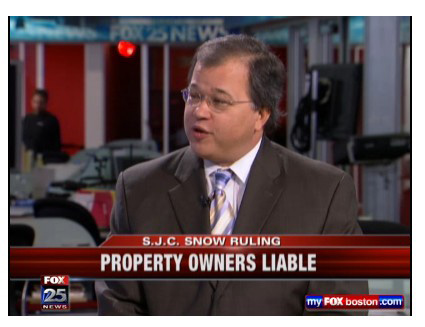
Massachusetts Law on Snow and Ice Removal The law for clearing your property is more strict than in past years. It changed in 2010, with the Massachusetts Supreme Judicial Court’s decision in Papadopoulos v. Target Corporation, SJC-10529 (July 26, 2010). View TV interviews from 2010/2011 in which attorney David White explains the law.
Prior to then, property owners were liable for injuries sustained on what was known as “unnatural accumulations” of snow or ice. Examples of this are gutters leaking onto sidewalks or snow piled on sidewalks.
The state’s high court changed the longstanding law so it falls in line with other states. Massachusetts property owners now have a responsibility to keep their premises in a reasonably safe condition and clear all snow and ice, whether it is a natural accumulation by Mother Nature or pushed there by a plow.
This law applies to homeowners as well as commercial property owners.
A few points to remember when it snows:
- You have a responsibility to clear your driveway, sidewalks and other areas accessible to the public.
- If you are using a snow blower, remember a shovel for narrow and hard-to-reach areas.
- Do you have the physical ability and time to clear your snow this year? If not, consider contacting a snow removal company.
- Cities have responsibility for clearing sidewalks, but some have ordinances requiring residents to clear their own. These include Boston, Worcester and Newton.
Safety
We all have to balance our legal responsibility to clear the snow with safety. It is hard work and tempting to take shortcuts at times. Remember a few basic safety rules. Do not start your snow blower in your garage or other covered areas. Before you shovel your driveway, clear your home’s heating vents so carbon monoxide does not build up in your home. Then, make sure you dress in layers and take breaks as needed.
Related:
Snow removal law may face test, Boston Globe, Dec. 25, 2010.
Read More
Tips for Buying Safe Toys This Holiday
 Many of us worry about buying unsafe toys during the holiday season. This concern has merit. In 2011 alone, more than 262,000 toy-related injuries were reported and another 13 children were killed while playing with dangerous toys, according to the Consumer Product Safety Commission (CPSC). This year, the CPSC reports toy recalls are down, but toy-related injuries have risen.
Many of us worry about buying unsafe toys during the holiday season. This concern has merit. In 2011 alone, more than 262,000 toy-related injuries were reported and another 13 children were killed while playing with dangerous toys, according to the Consumer Product Safety Commission (CPSC). This year, the CPSC reports toy recalls are down, but toy-related injuries have risen.
What to remember when you shop:
Choose Age-Appropriate Toys. Toys should have labels explaining age recommendations and other important warnings, such as “Flame retardant/Flame resistant.” The CPSC recommends avoiding toys with small pieces for children under age 3. They pose a choking hazard. For older children, avoid playsets with small magnets and balloons.
Buying Toys Online. Read instructions for use carefully. If you are buying from Amazon or eBay, remember those websites are only shopping forums. Take note of which company is selling the product.
Sharp Pieces.Toys designed for children under 8 years of age should not have sharp glass or metal edges.
Shattered Pieces. Set aside any toy that looks like it could easily shatter into small pieces and cause choking, cuts or other serious personal injuries.
Magnets.Toys with small magnets are dangerous to children. When children swallow one or more, the magnets can pull together and cause internal injuries, resulting in vomiting, abdominal pain and infection. In the past few years, children have suffered serious injuries and even death. In response, the CPSC has started a Magnets Information Center.
Loud Noises.Toy guns, tablets and talking dolls can damage a child’s hearing over time if used too closely.
Cords and Strings. Toys with long cords and strings can cause strangulation. Carefully consider this before you buy crib gyms, baby mobiles and swings. If a child can reach a baby mobile, it should be removed.
Batteries. Make sure an adult, not a child oversees battery charging for any toys or electronics. Avoid toys with small button-cell batteries, which can be easily swallowed and cause burning, esophagus pain and vomiting among other symptoms. Also be aware of other appliances, such as remote controls, which use these small batteries.
Sports Equipment. When you buy a sports-related toy, make sure you also buy the safety equipment, such as bike helmets for bikes. Children are required to wear bike helmets in Massachusetts until age 16 and if an accident were to occur, they are an important tool for preventing a lifelong head injury.
Related:
Holiday Toy Safety, Consumer Product Safety Commission.
Tiny Batteries Causing Big Health Problems for Kids, ABC News.
Read More
New England Construction Worker Injuries Need More Study, Researchers Say
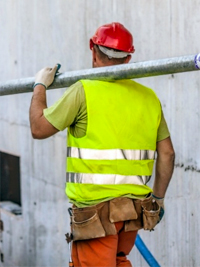 A new pilot study measures the physical and emotional toll on New England’s construction workers – and researchers say more investigation is needed.
A new pilot study measures the physical and emotional toll on New England’s construction workers – and researchers say more investigation is needed.
Construction workers face a high risk of physical injury on the job. In 2011, these workers accounted for 12 percent of all workplace deaths in the U.S., according to the Bureau of Labor Statistics (BLS). Construction accidents and injuries can happen when employers or construction site managers are negligent in complying with OSHA and other safety regulations, fail to properly staff a job or do not provide the necessary training.
The new study from Harvard School of Public Health shows 20 percent of the construction workers surveyed showed signs of being at risk for suicide. More than 40 percent had suffered one or more workplace injuries in the prior month.
The study was published online Oct. 1 in the Journal of Occupational and Environmental Medicine. Researchers say the findings show more detailed studies are needed to provide a better understanding of the high frequency of construction injuries and how they relate to mental distress. Researchers also want to focus on increasing literacy rates among construction workers and preventing suicide and suicide attempts.
Study Findings
In August 2012, the researchers surveyed 172 New England construction workers whose average age was 41 years old. They were questioned about psychological distress, depression, anxiety, job satisfaction, musculoskeletal use, injuries and alcohol and tobacco use.
Of these workers, 75 percent had experienced musculoskeletal pain over the past three months. In the month prior, 42 percent had reported one or more work injuries. When researchers followed up by phone with workers who fit the criteria for depression, 20 percent showed signs of being at risk for suicide. Some 16 percent reported they were distressed but the majority – nearly 60 percent – had sought no professional help.
When proper precautions are not taken, construction workers face numerous risks for physical injury and death. The most common causes are falls, electrocution, being struck by an object and being caught in or between equipment and buildings, according to the BLS. Nearly three out of every five construction workers are killed by one of these causes.
Here in Massachusetts
Here in Massachusetts, construction workers face the same risks. In 2012, 32 workers died on the job, including six construction workers, according to the Massachusetts Coalition for Occupational Safety and Health (MassCOSH), which reports figures annually each spring.
Over the summer, the state saw three tragedies. In August, a tree worker died from burn injuries in Holliston, after coming into contact with live wires. A week earlier, another tree worker suffered serious electrical burns in Chelmsford when he was hit by branches and live wires. In July, a 26-year-old construction worker was killed at a Plymouth construction site when a concrete form collapsed and crushed him beneath wooden frames.
MassCOSH is starting to collect new data on other risks to construction and other workers. In its most recent “Dying for Work” publication, it reported 320 Massachusetts workers died from occupational diseases. It estimated asbestos exposure caused over 90 deaths that year.
Related:
Construction workers struggle with pain, stress from injuries, Harvard School of Public Health.
Dying for Work in Massachusetts, April 28, 2013, MassCOSH
MassCOSH website.
Read More
Take Extra Precautions with Propane Gas Grills This Holiday
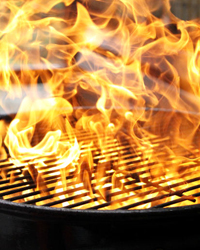
For many of us, Fourth of July celebrations start with a barbecue grill. Many are powered by a propane gas tank and require special care in handling. Propane is an invisible, but highly flammable gas which can trigger an explosion if it leaks and comes into contact with fire.
When grills are not properly used or maintained or are left unattended, accidents can occur. There are several safety concerns associated with grills, including propane leaks, cooking burns and fires. In the last year, there have also been a few product recalls involving grills.
Propane Gas Leaks and Explosions
Protect your propane gas tank from leaks. Take care when transporting it to your refilling station. Place it in a secure box and return it immediately home after filling it. Have it inspected annually by a qualified professional.
Store the propane gas tank outside your home. Also keep it away from your garage or any deck attached to your home. These areas may seem safe to use because they are not living areas, but according to the U.S. Fire Administration, more than half of all residential grilling fires in the U.S. begin on porches, terraces, exterior balconies and similar areas.
Grilling Burns and Structure Fires
When grilling, the safest solution is to stay outside your home or apartment building, as far away as you can.
This protects your home as well as your guests and young children who are too often victims of grilling burns. According to the National Fire Protection Association, children under age 5 accounted for about one quarter of all thermal burn injuries in 2007. Many of these burns occur when children are curious and touch or bump up against the grill.
If you live in an apartment building or multi-unit dwelling, you may also want to check with your property manager and city and town offices for additional information. Massachusetts state law does permit use of propane grills on first floor porches only, but some cities have gone a step further. For instance, the city of Boston does not permit either propane or charcoal grills above ground floor porches. Grilling on rooftops is not permitted either.
Before heading out to the grill, review the manufacturer’s instructions first. If you no longer have the instructions, check if they are available on the manufacturer’s website.
Use long-handled grilling tools and avoid wearing loose clothing. Work neat and remove grease and fat build-up from the grills.
Finally and most important, never leave the grill unattended. If you need to step away for a minute, finish up your cooking and turn the grill off.
Grill Recalls
Check the Consumer Product Safety Commission and your manufacturer’s website to see if there have been any recalls involving your grill. When a grill is recalled, you may be asked to return it to the manufacturer or retailer for a refund or be given instructions to replace a part.
In April 2012, more than 87,000 gas grills sold in the U.S. were recalled by One World Technologies, and another 1,400 in Canada. The company offered consumers a replacement regulator after receiving 569 reports its grills were leaking propane gas. The defective grills were sold at Home Depot stores nationwide and Directory Tools Factory Outlet stores from March 2011 through February 2012.
No injuries were reported at the time of the recall.
Another recall came in November 2012, when 37,000 Master Forge Gas Grills sold at Lowe’s Stores were recalled due to fire and burn hazards. In that case, consumers were asked to contact the manufacturer, Guangdong Vanward Electric Co., Ltd., of China, for revised instructions and a warning label that showed how to properly install the hose and regulator.
At the time of the recall, the manufacturer reported two reports of hoses melting and rupturing, but no injuries. The defective product was sold at Lowe’s stores nationwide from November 2011 through May 2012.
Toy Safety: 10 Worst List Highlights Dangerous Toys
 As the holiday shopping season begins, a watchdog organization is reminding consumers that not every toy on the shelves is safe.
As the holiday shopping season begins, a watchdog organization is reminding consumers that not every toy on the shelves is safe.
The organization W.A.T.C.H., or World Against Toys Causing Harm, Inc., has released its annual list of 2012 “10 Worst Toys.” W.A.T.C.H. says the toys on the list can cause children to choke, have sharp parts and carry misleading labels. The defective toys can be found online and in stores, at major retailers such as Toys “R” Us, Walmart and Amazon.
Dangerous toys seriously injure and kill children every year in the United States. In 2010, 17 children were killed in toy-related accidents. The majority were related to choking on balloons, small balls and rubber balls. The same year, about 181,500 children younger than 15 were treated in hospital emergency departments for toy-related injuries.
If you are shopping for young children, take a look at this year’s “10 Worst Toys” list. We have also provided a list of websites to help you make safe purchases below.
The Avengers Gamma Green Smash Fists
Potential for blunt impact injuries and there are no warnings on the package.
Playful Xylophone
Potential for choking injuries.
Power Rangers Super Samurai Shogun Helmet
Potential for impact and puncture wound injuries.
Water Balloon Launcher
Potential for choking and facial injuries. Varying age recommendations online and on the package.
N-Force Vendetta Double Sword
Potential for Impact injuries.
Explore & Learn Helicopter
Potential for strangulation and entanglement injuries. Cord is twice the length allowed by law.
Spinner Shark 4-Wheel Kneeboard
Potential for impact injuries.
Dart Zone Quick Fire 12 Dart Gun
Potential for eye injuries.
Bongo Ball
Potential for impact and other serious injuries. Children are encouraged to climb inside the inflatable ball. The toy and the packaging have contradicting instructions about supervision.
Magnetic Fishing Game
Potential for choking injuries. Different age recommendations online and on the packaging.
Related:
Toy Safety Fact Sheet, Safe Kids.
Toy Safety, U.S. PIRG.
Dangerous Toy Report Details Lead, Choking Hazards, Breakstone, White & Gluck.
Car Accident Risk Increases with Independence Day Holiday Travel
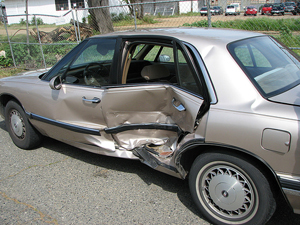 This year, the Fourth of July holiday travel is projected to increase, making it particularly important to plan and take precautions before getting behind the wheel. The AAA auto club expects a 4.9 percent rise in cars traveling 50 miles or greater. The travel will be spread out over the six days between Tuesday, July 3 and Sunday, July 8.
This year, the Fourth of July holiday travel is projected to increase, making it particularly important to plan and take precautions before getting behind the wheel. The AAA auto club expects a 4.9 percent rise in cars traveling 50 miles or greater. The travel will be spread out over the six days between Tuesday, July 3 and Sunday, July 8.
The expected Independence Day holiday travel volume will tie the past decade’s previous high mark set in 2007 and represents a near 42 percent increase from 2009.
The busiest days were expected last Friday and this coming mid-week. The National Safety Council estimates the U.S. will see 173 car accident deaths between Tuesday night and Wednesday. Some 17,300 serious personal injuries requiring medical attention were also expected.
The Boston car accident lawyers at Breakstone, White & Gluck urge drivers to be safe, plan and take precautions with these tips:
Fuel Up. Always fuel up your car before you start traveling.
Seat Belts. Seat belt use saved more than 75.000 lives from 2004 to 2008, according to the National Highway Traffic Safety Administration.
No Cell Phones. You reduce your ability to respond to potential accidents when you are talking or texting. To avoid temptation, the best plan is to ask someone else to hold your phone.
Travel Off-hours. The mid-week holiday provides more options for traveling. Consider returning Thursday or Friday rather than Saturday or Sunday.
Mass 511 Traffic Updates. Click here for traffic updates on Massachusetts car accidents and roadway conditions.
Slow Down. Make sure you are providing adequate room between yourself and the car in front of you.
Tolls. Consider signing up for a pre-pay toll program before your trip. This will allow you to use a greater number of lanes at the toll booths and reduce your chance for a car accident.
Use Your Air Conditioning. In addition to keeping everyone in the car comfortable, it will allow you to stay more alert while driving.
Tires. Make sure your tires are properly inflated before you travel a long distance. Underinflated tires can cause tires to overheat and result in a car crash.
Battery. If your car battery is over 3 years old, have it checked before you travel. Heat can cause your battery to fail.
Traveling with Children. Supply children with books to flip through or similar low-key toys to keep them occupied so they will not distract you while driving.
Drowsy Driving. If you are having trouble sleeping and drive, you could cause a serious car accident. Ask someone to take the wheel.
Emergency Kit. Stock an emergency kit with water, non-perishable food, a flashlight with extra batteries, jumper cables, road flares, a first aid kit and neon vests for all your passengers. This will make you visible to other drivers if you must exit your vehicle.
Pedestrians and Cyclists. Whether you are traveling to your holiday destination or running out to the store once you have arrived, watch out for pedestrians and cyclists on the shoulders of the road and crossing.
Related:
- AAA Projection for Independence Day Holiday Travel Ties Record for Highest Volume in Past Decade.
- Seat Belts, National Safety Council.
- AAA Provides Five Ways to Help Your Car to Survive Extreme Heat.


